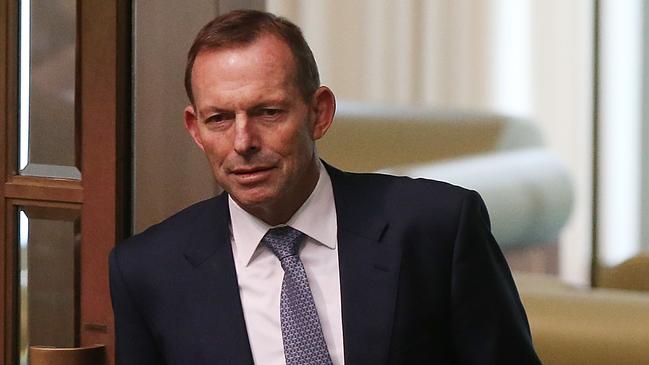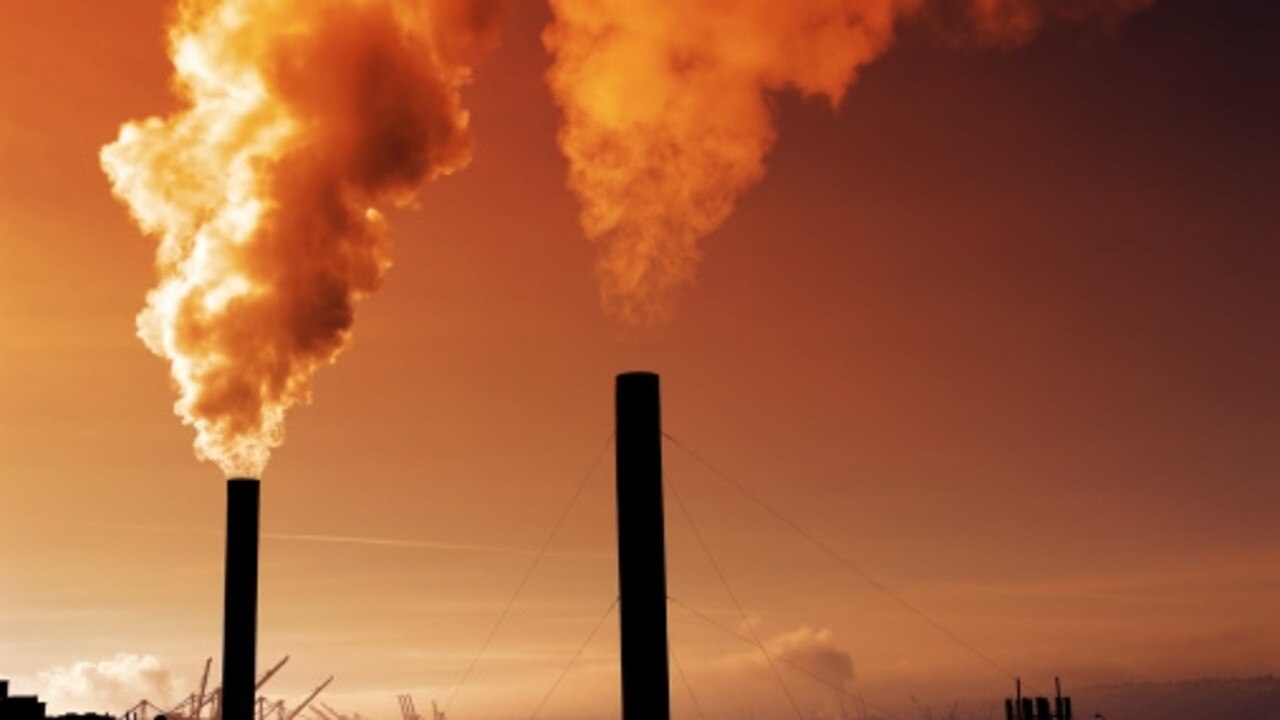Emissions target was signed off by Tony Abbott
Tony Abbott gave prime ministerial backing in a crucial cabinet meeting to ramp up Australia’s emissions reduction targets ahead of Paris deal.

Tony Abbott gave prime ministerial backing in a crucial cabinet meeting in August 2015 to a proposal to ramp up the upper limit of Australia’s emissions reduction targets from 26 per cent to 28 per cent ahead of the Paris climate-change agreement.
Mr Abbott’s backing for the proposal to increase Australia’s emissions reduction target from the original proposal of 26 per cent to a potential 28 per cent has emerged amid anger from former ministerial colleagues at his call last week for the government to walk away from the Paris Agreement.
The Australian has learned that when a graph was presented to cabinet showing Australia’s emissions trajectory would get to 26 per cent using largely existing policies with the possibility of reaching 28 per cent, it sparked a discussion supported by conservative members of cabinet that 28 per cent should become the aspirational upper limit. Mr Abbott endorsed the decision.
Following the meeting, Mr Abbott announced on August 11, 2015, a “definite” emissions reduction target of 26 per cent which could be lifted to 28 per cent if circumstances permitted.
Mr Abbott lashed out at former cabinet colleagues after The Australian learned details of the cabinet talks about the formulation of the targets.
“It wasn’t raised by me, it was pushed by others in the cabinet,” Mr Abbott said. “I’m sick and tired of cabinet ministers leaking against the bloke who got them into government. This is the kind of thing that is bringing the current government into disrepute.
“If I’ve got something to say, I say it up front and put my name to it. I wish my former cabinet colleagues acted by the same principle.”
Mr Abbott last week described the target as “aspirational’’ and called on Malcolm Turnbull to walk away from the Paris Agreement, using Donald Trump’s announcement that the US would withdraw and the fact that China and India were not bound to reduce emissions under the accord.
Delivering the Bob Carter memorial lecture in Melbourne last Tuesday, Mr Abbott said: “What wasn’t widely grasped, even then, is the impact of emissions policy on economic outcomes.’’
“I certainly didn’t anticipate, as prime minister, how the aspirational targets that were agreed to at Paris would, in different hands, become binding targets,’’ he said. “I didn’t anticipate how agreeing to emissions that were 26 per cent lower in 2030 than in 2005 would subsequently become a linear progression of roughly equal cuts every year over the next decade.
“But now that we are more alive to all the consequences of combining energy policy with emissions policy — and now that we do understand that this will define our economy for decades to come — there is no excuse for getting it wrong again.’’
Government sources have suggested to The Australian that Mr Abbott’s call to abandon the Paris commitment underlines a key disagreement in the Coalition on energy policy.
One source said Mr Abbott and Mr Turnbull were overstating the difficulty of achieving the Paris target for different reasons: Mr Abbott as part of an attack on the national energy guarantee, and Mr Turnbull as part of an argument to win support for the NEG.
The issue that is rankling conservatives is that having backed a Paris target on the basis it could be achieved without a significant change in policy, they are now being told the NEG, and its accompanying emissions constraints, is necessary to enable the targets to be achieved.
One criticism of the Turnbull approach is that it is placing too big a requirement on the electricity industry, as the country’s biggest carbon emitter, to achieve abatement and not seeking similar abatement from other sectors such as the land sector.
Another cheaper way of meeting the Paris target would be to buy international carbon credits. European carbon credits are trading for about $23 a tonne, which is about a third of the cost of electricity industry abatement.
Mr Abbott said at his press conference announcing the decision that it would cost between $3 billion and $4bn in the year 2030 — a 0.2 to 0.3 per cent reduction in GDP. But modelling attached to the submission by leading economist Warwick McKibbin suggested Australia faced a larger economic hit than most other developed economies to achieve similar emissions reductions.



